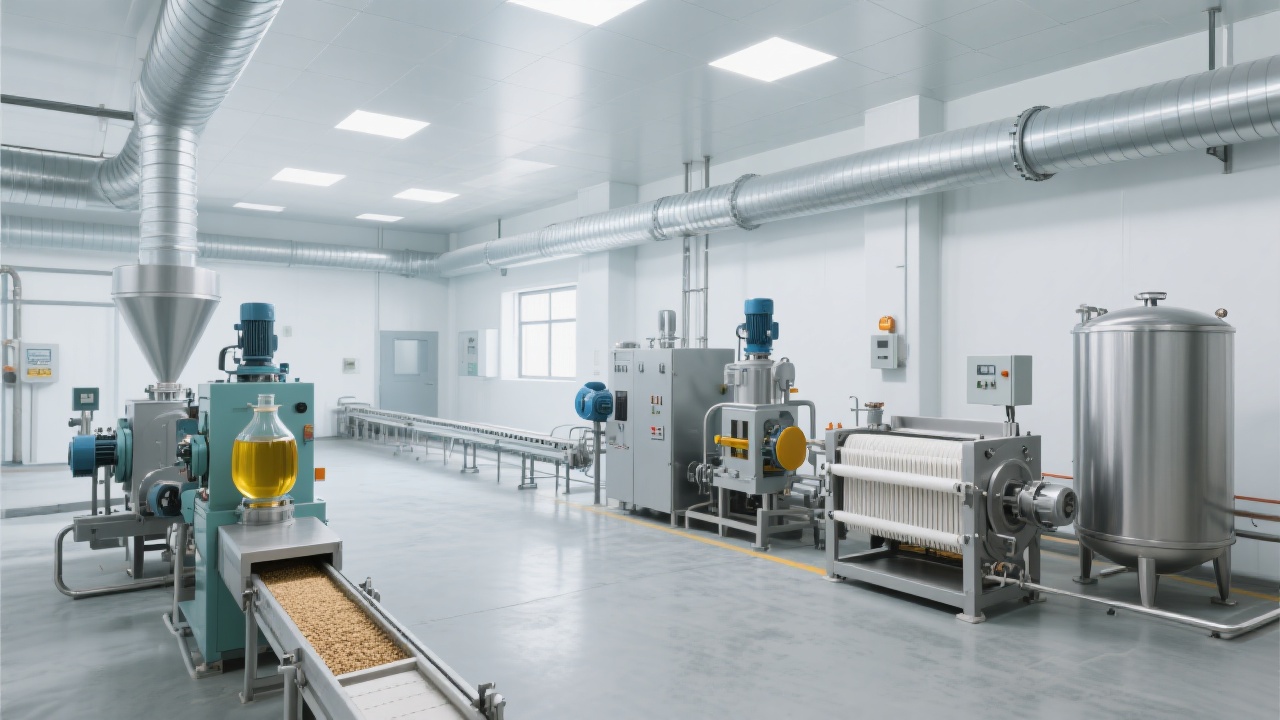Comprehensive Analysis of Palm Kernel Oil Production Equipment Selection: Customized Configuration Plans Based on Production Capacity Requirements
2025-08-03
Technical knowledge
Are you looking to select the most suitable equipment for palm kernel oil production? This article details how to customize configuration plans according to production capacity requirements ranging from 5 to 500 tons per day. It covers selection logic, installation technical specifications, common debugging issues, and long - term maintenance strategies to help you make scientific decisions, achieve efficient production, and ensure stable operation.

In the years of working in the palm kernel oil production industry, I've found that the most common pitfall for buyers is choosing the wrong equipment configuration that doesn't match their production capacity. This can lead to inefficiencies, high costs, and even production failures. In this article, I'll guide you through the process of selecting the right palm kernel oil production equipment based on your capacity requirements and ensuring a smooth project implementation.
1. Equipment Selection Based on Production Capacity
Let's first look at how different production capacities (e.g., 5T/D, 50T/D, 200T/D, 500T/D) require different equipment models and configurations. Balancing efficiency and cost is crucial here.
| Production Capacity (T/D) |
Main Equipment Models |
Key Features |
Cost-Efficiency Analysis |
| 5 |
Small-scale extraction and refining units |
Compact design, easy to operate and maintain |
Low initial investment, suitable for small businesses |
| 50 |
Medium-sized extraction and refining systems |
Improved automation, higher production efficiency |
Balanced cost and output, suitable for medium-sized enterprises |
| 200 |
Large-scale extraction plants with advanced refining equipment |
High automation, large production volume |
Economies of scale, lower unit production cost |
| 500 |
Ultra-large production lines with full automation control |
Full automation, high precision, and stability |
Higher investment but significant long-term benefits for large enterprises |
For example, a 5T/D production line may be sufficient for a startup with limited capital and market demand. It typically uses smaller extraction and refining units that are more affordable and easier to manage. On the other hand, a 500T/D production line requires large-scale, fully automated equipment to ensure high efficiency and product quality. However, the initial investment is much higher, so it's important to carefully assess your long-term production plans and financial capabilities.
2. Key Technical Points in Installation
Once you've selected the right equipment, proper installation is essential for its smooth operation. Here are some key technical points to consider:
- Site Layout Rationality: The layout of the production site should be designed to minimize material handling and ensure a smooth production flow. For example, the extraction area should be close to the raw material storage area, and the refining area should be adjacent to the product storage area.
- Pipeline Connection Standards: All pipelines should be connected according to industry standards to prevent leaks and ensure proper fluid flow. The use of high-quality pipes and fittings is also crucial for long-term reliability.
- Electrical Safety Regulations: Electrical systems must comply with relevant safety standards to prevent electrical hazards. This includes proper grounding, insulation, and the use of appropriate electrical protection devices.
- Pressure Vessel Compliance: Pressure vessels used in the production process must meet strict safety requirements and be regularly inspected and maintained.

3. Troubleshooting in Commissioning
During the commissioning phase, you may encounter some typical problems. Here are some common issues and their solutions:
- Low Solvent Recovery Rate: This may be caused by improper solvent recycling systems or leaks. To solve this problem, check the solvent recovery equipment for blockages or damage, and ensure that all connections are tight. With our equipment, the solvent consumption can be controlled to ≤2kg/T.
- Excessive Residual Oil: If the residual oil in the extracted meal exceeds the standard (e.g., ≤1%), it could be due to improper extraction parameters or equipment malfunctions. Adjust the extraction temperature, time, and solvent ratio, and check the extraction equipment for any problems.
- Control System Abnormalities: Control system failures can disrupt the entire production process. Regularly check the control software and hardware for errors, and ensure that all sensors and actuators are working properly.
4. Systematic Equipment Management
To ensure the long-term stable operation of your equipment, a systematic management approach is necessary. Here are some suggestions:
- Daily Inspection Checklist: Develop a daily inspection checklist to cover all key equipment components, including temperature, pressure, flow rate, and equipment operation status. This helps to detect potential problems early.
- Lubrication and Maintenance Schedule: Follow a regular lubrication and maintenance schedule for all moving parts to reduce wear and tear and extend the equipment's service life.
- Key Component Life Prediction Mechanism: Monitor the operating status of key components and establish a life prediction mechanism. This allows you to replace components in advance to avoid unexpected breakdowns.
Many of our clients, such as a palm oil producer in Southeast Asia, have successfully implemented our equipment solutions. They have achieved high production efficiency, low production costs, and stable product quality. Our equipment features full automation control, CE/ISO certification, and has been operating stably around the world, demonstrating its adaptability and reliability in complex environments.
Do you have any similar challenges in your palm kernel oil production? Share your specific situation with me, and I'll send you three case studies of similar solutions in your industry. Click here to learn more.



